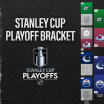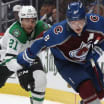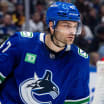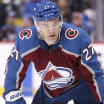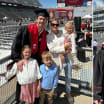Editor's note: As part of the NHL celebrating Black History Month throughout February, NHL.com will present first-person essays by some of the game's key Black players and executives. Today, Rod Braceful tells the story of growing up in Detroit, playing hockey at Jack Adams Arena and how it has impacted his career choices.
Black History Month essay: Rod Braceful
USA Hockey assistant director on importance of Hockey is for Everyone program
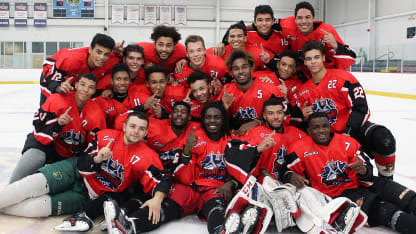
By
Rod Braceful / Special to NHL.com
My hockey journey has been more than I ever thought possible growing up.
I was born in Detroit and raised there by my mom. She was a teacher and school administrator who worked for the Detroit public school system for over thirty years. Mom was always focused on getting me involved in activities, often the kind of activities none of the other kids in the neighborhood were a part of. When all the other kids were signing up for soccer, basketball or football, mom got me into music lessons. Wayne State University had something for young kids who wanted to get involved in music. I remember going on Sunday mornings to these music classes and thinking 'why am I doing this?' My mom was very much a forward thinker in what she introduced me to and my overall development as a person.
A family friend had a son who was playing hockey, so I went along one day and watched him practice. It was something I thought I would like to try, and it became part of my regular sports activities. I played hockey with the Detroit Hockey Association, at the time the DHA, as we called it, was part of the NHL's Diversity programming, which became Hockey is for Everyone. The Detroit Hockey Association was made up of volunteers and the organization leaders were Will McCants and Marvin Hicks.
I was about 5 years old when I started playing there. Hockey wasn't a first love situation for me because it wasn't the only thing that I was doing. I was playing other sports. Sometimes you hear some people say that as soon as they put on the skates and played, they fell in love with hockey. For me, it was another activity I was doing. I was a kid just trying to figure it all out. Eventually, I chose hockey as my main sport for the friendships and the atmosphere. And I did develop that love of the game that began the hockey journey that has taken me to where I am today.
The Detroit Hockey Association was made up of committed volunteers and the players were predominantly kids of color. There were white players as well. When I was growing up, hockey really did seem like it was for everyone. Growing up and playing at Jack Adams was great. There were white kids, Hispanic kids, and Black kids and it was common that any of my teams would have four or five girls. The DHA and Jack Adams was our own bubble. We didn't really think about race there. One of my best friends growing up was white and his dad was on the DHA board and his brothers all played in the DHA. Because of the community that was created, there was a disconnect regarding race and minorities playing the sport. I say disconnect because everything was normalized for me. For example, I didn't think it was that crazy or unusual telling people I played hockey. But outside of this community if I mentioned it people seemed caught off guard by that and I wondered why. At Jack Adams Arena, it was everyday life for us to see Black, Hispanic, and white kids on the ice, so it wasn't far-fetched for any of us to think of ourselves as anything less than hockey players.
Those days playing hockey and hanging with my friends was everything -- that was the life! When I was 11, I was invited to play in the Willie O'Ree All-Star Game in Washington, D.C. That was a thrill. One day, Mike Grier paid us a visit in Detroit. What he represented to us was powerful and not so much because I thought that one day it could be me playing in the NHL, but I was impressed that he could do it. I thought maybe the best player on my team at the time, John Carter, could be the next Mike Grier. That is where representation matters. John would eventually get drafted by the Philadelphia Flyers but not play in the NHL. Still, seeing Mike, I believed anything was possible. I had a success mindset.
As I moved on to play at higher levels, it became apparent that the hockey world outside of Jack Adams was different. When I was in fifth grade I was picked to play on a spring team and a group of us played. That was the first time things were not the same. I was with a different group of kids in a league that was predominantly white. I was now out into the real world and in the larger society. At that point my mom was able to prepare me. We had the talk. The talk that every Black parent has with their child at a certain age. She had grown up during the Detroit riots and had experience with race issues. She's had to have these tough conversations and prepared me at a young age on how to face the world. Those conversations were important to me as I was getting older.
After leaving DHA, I progressed through the youth hockey ranks and AAA hockey where I was fortunate enough to have the chance to move on to junior hockey. When I moved on from the DHA and into AA and AAA hockey, there were older players like Jason McCrimmon, who later founded Detroit Ice Dreams, another Hockey is for Everyone program. Jason was five years older. When he played junior hockey, his experiences were things we were hearing about playing Bantam. So even though we were still some years away, we were preparing for that process. Had I not had those experiences at the AA or AAA level I don't know how far I would have gone. Had I not seen those players who look like me, their rise and struggles, I don't know if what I am doing would have been possible. And it helped me with my own inner drive.
After bouncing around the junior ranks, a stint of NCAA Division III hockey at New England College followed. After suffering a few injuries, I decided to stop playing and was planning to transfer and go to university back home in Michigan. After a conversation with my coach and guidance counselor, I decided to be an undergrad volunteer coach. It was there I fell in love again with the game and really thought that it could open up possibilities at the highest level.
After college, I coached six years in Metro Detroit at the AAA level for Detroit Compuware and Detroit Little Caesars organizations. I was also able to work full-time for Selects Hockey, specializing in spring and summer camps and tournament teams. This allowed me to continue to work in hockey full time but also being relevant in the game by developing and molding young players. I scouted in the USHL for the Sioux Falls Stampede and then became the Director of Scouting for the Muskegon Lumberjacks. After a year in Muskegon I was hired by USA Hockey to become the assistant director of player personnel at the U.S. National Team Development Program (NTDP).
My job is to look for the country's best players. I help manage the two teams in the National Team Development Program in Michigan and then go out scouting to help pick the next group. We ask players for a two-year commitment to the program and then get them ready for the U18 World Championships. That is the first big international tournament, then it is the U20 and men's Worlds and the Olympics.
The NTDP and the growth of hockey in the United States has been phenomenal. Toronto Maple Leafs forward Auston Matthews came to the NTDP program out of Arizona. When the NTDP first started, I'm not sure USA Hockey officials fathomed that would happen in the first twenty years, but it did.
My experience has been incredible. My role is a misunderstood one. When people ask where I work it is a broad brand and I am not in Colorado Springs. I'm in Plymouth, Michigan here at our NTDP offices. We have 20 people or so people here. The coolest thing is that everybody has a role and trusts each other to do their role. The freedom and ability to manage my own and go off and do things and bring ideas to the table is something that I would not have originally imagined.
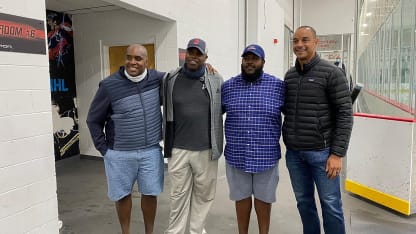
My hope is that what I am doing inspires others to pursue hockey. Seeing Blake Bolden, Brett Petersen, Mike Grier doing what they do will give hope to others and many who might not be players. You don't have to be a player. You could be a person of color who is a fan of the game who goes to Georgetown Law School and later becomes legal counsel for a club or the league. Anything is possible.
Hockey is for Everyone organizations have a legacy and instill those dreams in the young people they get to play hockey. These organizations do a great job in introducing the game and providing students with the basics. In some cases, those kids go on, like I did, to take the next step. We have to make sure we take care of those kids and help them to understand the options that exist to continue playing hockey. Sometimes when I scout games, there might be a Black player on the ice and his or her family is in the stands. I wonder who is helping that player? Who is helping them at the squirt and bantam levels to get into midget or junior hockey? The more we see the influx of those players getting into American junior hockey, the more participation we will see in the college ranks for Division I and Division III. The more hockey players we get at those levels is how we get more pro hockey players.
If it wasn't for the Jason McCrimmons of the world, I don't know how I would have made it. Even though my own playing career was not prolific, I learned a lot from his experience. But he has done so much work to impact hockey at the grassroots level in Detroit. The DHA went away, Jack Adams Arena has almost closed on many occasions. If it wasn't for Jason going back and starting Detroit Ice Dreams, who knows what happens to those kids of color in the community. I remember being the same age as the kids who are in his program now. At that age, going to the arena there were barely any empty parking spots. It was packed on Saturdays and Sundays. Hopefully, with the things going on in our society and people being more vocal and paying attention there can be more constructive conversations about doing the right thing and helping Hockey is for Everyone organizations do more to get kids to move to the next level.




